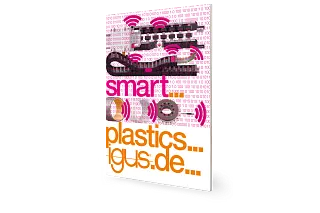Change Language :
Sensors monitor energy chains in engine plants in the automotive industry
An intelligent energy supply avoids failures by means of continuous condition monitoring
In hardly any other industry is reliability as important as in the automotive industry. Entire vehicles or even individual components such as engines pass through the production line with a very high degree of automation. If a part comes to a standstill, it can quickly lead to expensive production downtime. It is therefore important for vehicle manufacturers and suppliers to be able to rely on dependable components. An Austrian engine manufacturer therefore relies on 'smart plastic' from igus®. Sensors detect wear during operation and issue an alarm in good time as soon as a repair or replacement is required.
Products used
"Thanks to the digital networking of machines and products, it is possible to continuously record the condition of the components and report as soon as a repair or replacement is required."
Michael Blaß, Vice President e-chain systems at igus®
smart plastics general overview

Our new brochure shows you everything at a glance
Topic overview:
- Condition monitoring (i.Sense)
- Condition monitoring products
- Application examples of condition monitoring
- predictive maintenance (i.Cee)
- Application examples for predictive maintenance
- How does the data flow with predictive maintenance?
Twice as safe: abrasion and breakage monitoring
The isense EC.W ("W" for "wear") abrasion monitoring system is also used in the energy chain: A sensor chip installed in the crossbar of the e-chain® continuously measures the condition of the sliding e-chain® as it travels: if the abrasion is so advanced that the end of the chain's service life is approaching, the sensor reports this and triggers a signal. However, the abrasion of the energy chain made of high-performance plastics is not yet so advanced that a signal has ever been triggered.
The use of the isense EC.B modules ("B" for "break") is much more decisive here. They monitor the condition of the chain using a polymer wire inside the energy chain and a sensor unit. In the past, visual inspections of energy chain systems have resulted in no complaints, but two weeks later the chain has failed. This can be prevented by the breakage monitoring system. However, a lot of fine-tuning still had to be done at the start of the beta phase. This is because the temperature in a factory hall has a major influence on the length of the chain and therefore also on the pretension of the polymer wire. It was necessary to determine limit values in order to distinguish between "normal" expansion and actual incidents.
At the Austrian engine plant, the isense modules from igus® have already been named innovation of the month. There are currently considerations and plans to equip around 50 to 60 energy chain systems from igus® with breakage monitoring. The three test systems are already at the point where the system stops in real operation and the responsible machine setters have to take action. After a visual inspection, they can decide whether it was a false alarm or whether there is an actual need for action. This means that even during the current beta phase, expensive consequential damage can be avoided and the gantries can be moved safely.
Consulting
I look forward to answering your questions

Andreas Dengler+49 2203 9649 7734Write e-mail
Shipping and consultation
In person
Monday to Friday: 8 am – 8 pm
Saturday: 8 am – 12 pm
Chat-Service
Monday to Thursday: 8 am – 6 pm
Friday: 8 am – 5 pm
WhatsApp-Service
Monday to Thursday: 8 am – 4 pm




